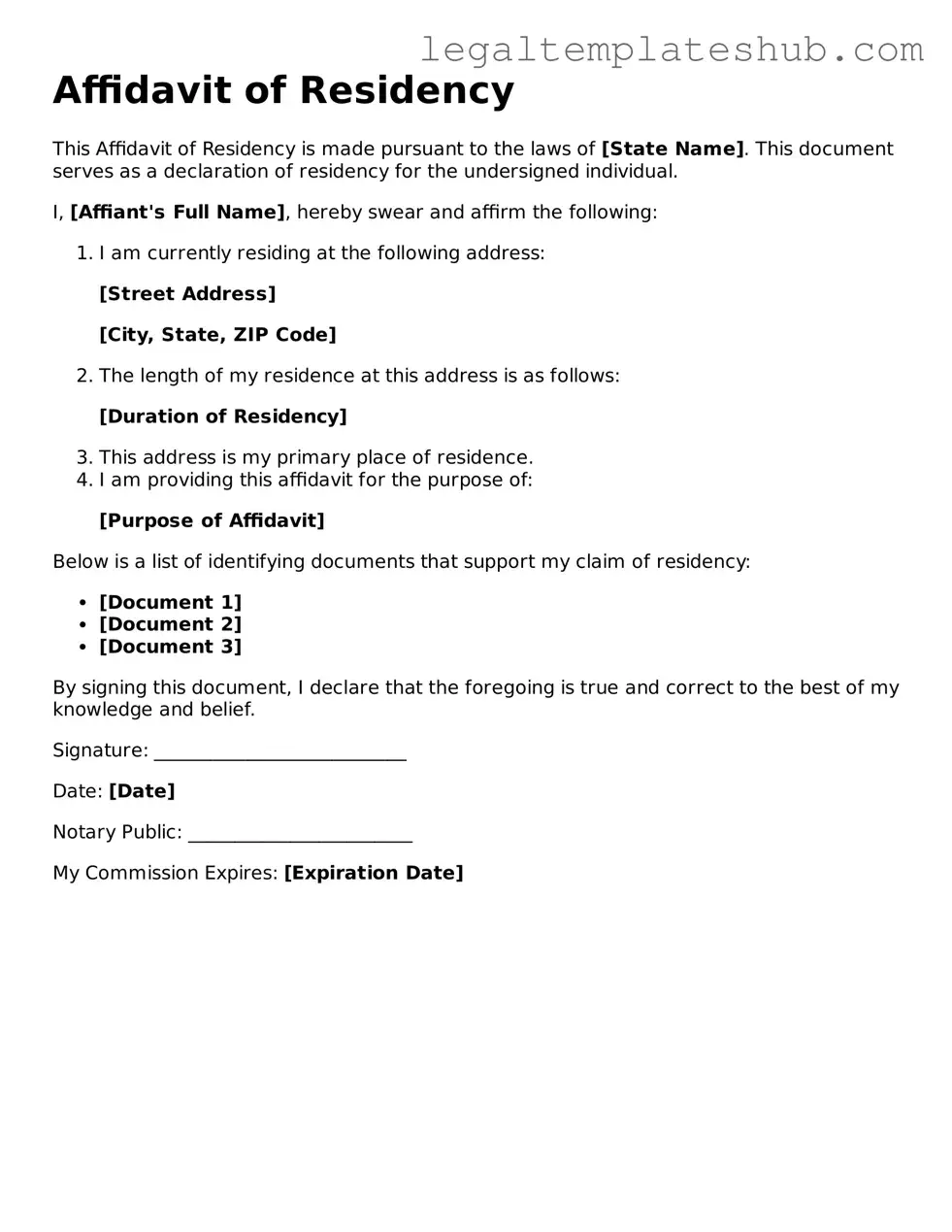Printable Affidavit of Residency Template
An Affidavit of Residency is a legal document that verifies an individual's address and confirms their residency status. This form is often used for various purposes, such as enrolling children in school, applying for government benefits, or establishing residency for legal proceedings. Understanding how to complete this form correctly is essential for ensuring that your residency is officially recognized.
To fill out the Affidavit of Residency form, click the button below.
Access Editor
